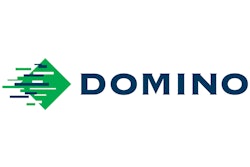During PW's February visit to Ingman Foods' Helsinki, Finland headquarters, part-owner and technical manager Peter Ingman was beaming at the prospect of potential sales from several new individual ice cream novelties, as well as a first-time multipack containing eight products sold as a single retail unit. Ingman is deploying its new product arsenal throughout Finland, as well as to parts of Sweden, Denmark, Russia and the Baltic states of Estonia, Latvia and Lithuania. Peter Ingman explains that this invasion wouldn't be possible without last summer's addition of an approximately $5 million packaging and processing line from Tetra Laval Food Hoyer (Albion, MI). The Straightline novelty production system is the newest of 16 packaging lines at Ingman's 20ꯠ-sq-m plant. The new line produces 18ꯠ packages/hr, more than doubling the 7ꯠ/hr rate of the previous line. "Before we added the Hoyer line, we didn't have the capability to produce ice cream novelties at the high capacity we needed to expand our sales," Ingman says. "We produced individual novelties on a more limited basis, and sold them in cases of 16 to retailers. "Consumers would then buy one or more individual products from that case within the store's freezer. We couldn't produce balltop cones unless we did them by hand. Also, we could not efficiently make chocolate-enrobed stick bars before last year because our enrobing system was not good enough. "The new line has changed all that," he adds. "It has not only enhanced the quality of the products we bring to our sales markets, but it's enabled us to introduce four new premium chocolate-enrobed stick bars, and a variety of ice cream novelty multipacks, some with two flavors in the same pack," he adds. In the U.S., multipacks of ice cream have been available for years, but Ingman says consumers in Finland are just now becoming aware of this pack. "Multipacks represent a strong sales growth area, and now we can make them more economically with automated cartoning." Prior to adding the new line, operators set up cartons by hand and manually loaded wrapped product into cartons, at about 20 cartons/min. The labor costs involved in erecting multipack cartons and inserting product, particularly in the volumes Ingman hopes to sell, would have been prohibitive. Hence, no multipacks. Now, with automated carton erection and carton filling at 50/min, Ingman can sell multipacks. "That speed lets us more efficiently set up the multipack cartons in large quantities," Ingman says. "The cost comparison is difficult to measure because it depends on factors such as the product type, and the size of the production run, but our labor savings are about 20 percent." The most unusual aspect of the new line is what Hoyer dubs its "floating" pocket system. Unlike many systems that deliver buckets at regular intervals to accept product, this system delivers an empty "pocket" when product is detected by photoeyes. According to Hoyer, Ingman is the first company outside the U.S. to use the system. Six-lane wrapping For now, the popular premium stick bars account for most of the line's production. Ice cream is extruded, using a hot wire to cut off individual bars. A wooden stick is inserted into the bar. Bars travel through a Later, a servo-driven pick-and-place head picks up 24 pieces by the stick, turns them 90°, then places them onto a conveyor. Bars index to the enrobing station where grippers pick up the bars, again by the stick, dip them down into the chocolate, then raise them back out of the enrober. The chocolate "sets" in seconds on the frozen ice cream. Bars then index to Hoyer's six-lane Hoywrap ML 1100 wrapper, which uses six rolls of material, one roll positioned beneath each of the six wrapping lanes. Each lane also holds a second roll that serves as a stand-by to permit continuous roll changes. Ingman relies on several vendors for its various paper/polyethylene wrapping materials. At the front end of the wrapper, an infeed bar works with photo-eyes from Sick Optic-Electronic (Eden Prarie, MN), to align one bar per lane. The wrapping process is identical for each of the six lanes, with each bar proceeding at the same speed throughout. Driving rollers pull material from the unwind, through a series of rollers, then to a forming "shoe." The material, printed side down, folds upward around this shoe, taking on a "U" shape. The conveyor delivers the bar onto the material, within the U-shape. Next, a longitudinal fin-seal is created via cold sealing rollers that use pressure to create the seal. The tube of material indexes forward to cross-sealing and cutoff. This is accomplished by independent sealing jaws and knives mounted on two rotating shafts. The cold-seal process simultaneously seals the trailing edge of the lead package and the leading edge of the next pack. The cut separates the individually wrapped bar. 'Floating' pockets Bars exit the wrapper simultaneously from each of the six lanes. Three bars discharge onto one right-angled conveyor, three onto another. Both conveyors feed bars broad-edge-leading towards the floating pocket systems. Two floating pocket conveyors are used. The process is identical for both lanes. Two photoeyes are positioned at the transfer point, between this infeed conveyor and the front of the floating pocket section. One detects product as it passes the transfer point, the other confirms that the bar is in the individual floating pocket. "These two photoeyes from Sick provide Ingman with a fail-safe system," notes Tetra's Jeff Kaplan. Each pocket is conveyed along an orbiting chain system. But while many such systems carry pockets that are spaced equal distances apart, on "centers," the floating pocket system feeds pockets on demand so that when the next wrapped bar reaches the transfer point, an empty pocket is delivered from its infeed station to the transfer point to accept the bar. Once the wrapped product is loaded into the pocket, the pocket releases, carrying the bar downstream to a queuing section. Once 24 bars accumulate at this section, a rotary stop releases, allowing the pockets to accelerate about 10 feet downstream to a pick-and-place module. Here, product-containing pockets are separated into six groups of four. A push arm gently sweeps the bars onto six sliding trays positioned between the two infeed lanes. Pockets then release for a return trip upstream to repeat the process. Six pick-and-place heads are positioned above this center area, in one row in the machine direction. Each head is equipped with suction cups that pick up the four pieces of product from each sliding tray. As the pieces are lifted, the trays slide open, allowing the heads to lower the product some 18" into an open carton that's positioned on a conveyor below. Heads are interchangeable to account for different bar or cone shapes, and may be adjusted to accommodate different pack patterns. The sweeping mechanism and pick-and-place functions repeat as often as necessary to fill the awaiting multipack carton with eight bars, or E-flute corrugated cases with 16- or more counts. Several suppliers provide Ingman with cartons and cases. Cartons or cases are formed off-line on a Hoyer TL former. "Before adding the Hoyer line, we packed wrapped bars into cartons by hand, and manually set up the cartons," Ingman recalls. "That required six people per shift. Now we need only two, one to maintain the cartoner, another to check product coming out of the machine. This way, we can economically produce the multipacks." Top-loaded cartons or cases are conveyed to a Hoypack PL closer where a bar contacts the front panel to square the carton. Next, the top panel is folded down, then sealed with hot-melt glue, supplied by a Nordson (Duluth, GA) system. Finally, side flaps are plowed and sealed. While the carton former and carton closer were manufactured by a Finnish firm, they were supplied to Ingman as part of the complete Hoyer system. "It works to our advantage that we give total responsibility to a single source," Ingman notes. A Domino Amjet (Gurnee, IL) Solo 5 Auto ink-jet coder applies a "best before" date, product name and batch code to the cartons, which are then conveyed through a wall to a separate room for manual palletization, followed by stretch wrapping. Product is shipped by truck to retailers, either directly to stores, or to distribution centers. Delivering freshness While product shelf life remains 18 months, the new line helps Ingman speed product to store shelves. "Our product is at its very best during the first six months," he notes. "With faster production times, we can begin production for the summer roughly in April, rather than starting say, in December. This way, product is distributed at its maximum freshness." Every sales edge is important to Ingman. "Competition among ice cream suppliers is increasing, especially in Russia and the Baltic states," Ingman notes. "The Russian economy is very depressed, so premium ice cream is expensive for them. However, our competitors are marketing products there, and we must as well." The size of the market justifies that effort. "We sell within the Russian city of St. Petersburg, and their population of five million people is about the same as our entire country of Finland," Ingman points out. Besides ice cream, the private, mostly family-owned company also produces yogurt, cheese, milk and juice products, to name a few. Ingman says annual sales approximate $250 million. He expects that figure to climb, thanks in part to the new ice cream novelty line. "We have seven other ice cream lines," Ingman notes, "but we take advantage of the Hoyer line for our high-volume products. We also want to produce as many multipacks as we can on the line. It greatly improves our output, reduces our labor costs, and helps us stay a step ahead of our competition."
































